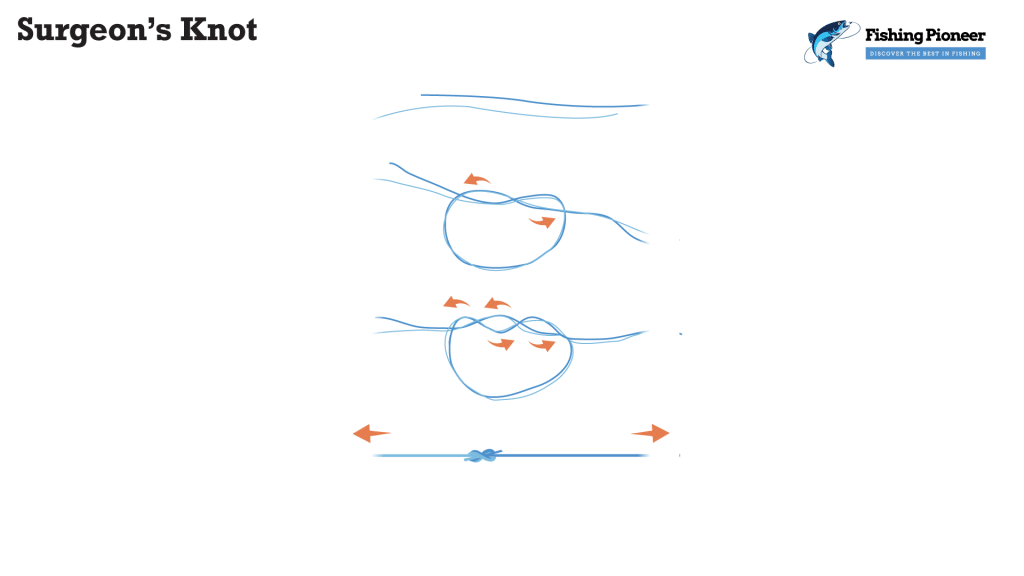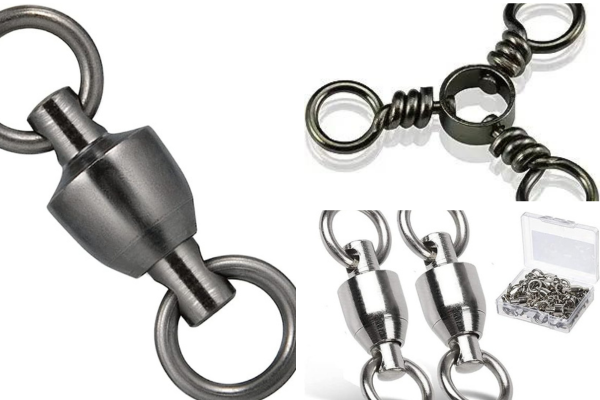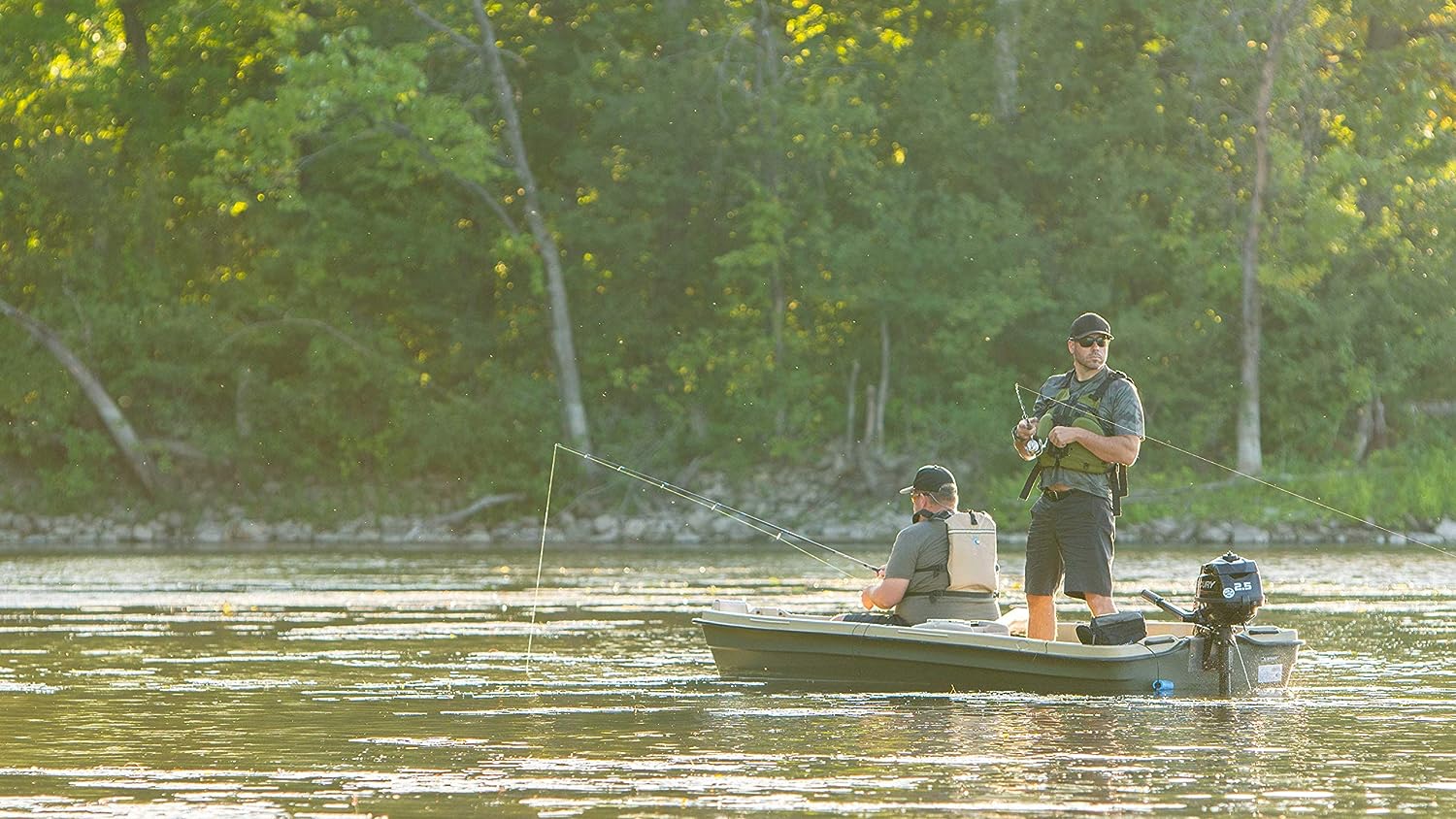If you are here, the chances are that you have never tied a fishing knot. Or you might have tied a couple but ended up with zero catch.
Either way, this article will guide you. Here, you will learn how to tie fishing knots, but because there are several knots, we will only show you the easiest but effective kinds.
In particular, we will teach you how to tie the four basic types of fishing knots. With these aids, you can wave goodbye to losing your catch due to loose knots.
So, shall we get started?
What Are The Easiest Fishing Knots To Tie?
For starters, know that there are hundreds of fishing knots. And each of those aids varies in terms of time taken, skills requirements, and ease of use.
Regardless of which knot you eventually choose, the goal is always to get a catch. And mind you, easy-to-tie fishing ties don’t mean ineffectiveness.
So, why not start with the easiest ways? Wouldn’t that be better than starting with knots that take all your time to tie? The fishes would already sense your presence and run!
We doubt you want the hectic option! You want the easy, fast, and bankable fishing knots. And here are top picks:
- Hangman’s knot
- Palomar knot
- Rapala Knot
- Surgeon’s knot
Hangman’s Knot
 As one of the easiest fishing knots, the Hangman’s can withstand a catch of up to 90% as its breaking limit. Beyond ease of use, this knot is also versatile.
As one of the easiest fishing knots, the Hangman’s can withstand a catch of up to 90% as its breaking limit. Beyond ease of use, this knot is also versatile.
The Hangman’s knot, also known as Duncan or Uni Knot, is a perfect fit for reels, lures, and hooks. It also works with braided, fluorocarbon, and monofilament fishing lines.
Summarily, here are the uses of Hangman’s knots:
- It attaches fishing lines to reels.
- It attaches hooks and lures to your tippet.
- It joins two fishing lines.
Caution: Hangman’s knot is not the same as “Hangman’s noose knot.” The latter is boating and not a fishing line knot.
So, how do you tie Hangman’s knot?
- First, take the line through the eye of your hook – you will find that around the shank. Then, loop the tag end.
- Take the looped tag end and wrap it around the line – after you must have doubled it. Do this wrapping about 5 to 6 times.
- Next, ease the tag end from the loop, then tighten it by pulling hard.
- Now, find the standing end of the line, pull it and slide the knot to your hook or lure.
- Lastly, cut off the unused part of the tag end.
Palomar Knot
 Without a doubt, the Palomar knot is the easiest to tie when you are attaching a line to hoot. Despite the ease, it is just as strong as any fishing knots that you can find.
Without a doubt, the Palomar knot is the easiest to tie when you are attaching a line to hoot. Despite the ease, it is just as strong as any fishing knots that you can find.
And if you fancy braided lines, you will love the Palomar knot even more. Besides, the Palomar knot is the best style for light fishing lines.
Still on the usage, Palomar knot can work with your hooks, lures, and swivels. And Like Hangman’s, the Palomar knot also retains its line strength. This time, the percentage is even better: you will get a 95%.
Summarily, here are the strengths of the Palomar knot:
- It can hold a fishing line of up to 20-pound tests.
- It has a 95% knot strength.
The only drawback with Palomar is that it might often entangle because it requires that you double run the fishing knot through the hook. Regardless, it is easy to use and efficient.
So, how do you tie a Palomar knot?
- First, measure 6inches of your fishing line and fold it over to make a loop.
- Now, run the folded line through the eye of your hook. It doesn’t have to be a hook; you can equally use a lure.
- Next, devise an overhand knot. Let that come above the opening in your hook. While you are it, don’t clutter the space. Instead, leave a few inches out on the end of the folded line.
- Now, open the loop, moisten it, and pass it over the hook. Afterward, close the loop by pulling on the standing and tagline.
- Lastly, test your knot in a tug to check if it is tight and safe to use.
Rapala Knot
If you’re particular about a non-slip aid for attaching your lure to a leader, the Rapala knot is what you seek. Like the other knots in our list, it is easy to tie, and most importantly, it allows your lure the freedom to move naturally.
Beyond ease of use, the Rapala knot is a strong aid. In particular, it is the perfect fit for fluorocarbon leaders.
The downside: Rapala knot doesn’t work perfectly with topwater lures and trolling plugs. Moreso, it takes a considerable time to tie.
Now you know the pros and cons of a Rapala knot. So, how do you tie one?
- First, fold about 3inches of fishing line into an overhand knot. Let it stand at least 5inches above the tag end line.
- Now, pass the tag end of the line through your hook or lure and the knot from step 1.
- Next, wrap the setup around your standing line thrice. Then, let the tag go through the back of the overhand knot.
- Also, pass the tag end through the loop you must have formed in step 3.
- Lastly, tighten the knot by pulling on the mainline, tag end, and hook in one direction.
Surgeon’s Knot

If you are joining lines of varying diameter, material, and weight, a Surgeon’s knot should be your pick. And If you do it right, you can even approach a 100% knot strength.
With Surgeon’s knot, know that you are dealing with two overhand knots where the leader passes through each time. We understand that the process might seem complex. But don’t be deterred!
Surgeon’s knot is practical and easy to make, as you will find out in the steps below:
- Align your leader and mainline by overlapping them over each other.
- Now, make a simple loop with the line.
- Next, push the leader of your mainline and the long piece through the loop from step 2.
- Do another overhand knot by pushing the ends in step 3 through the same loops.
- Now, moisten the lines and pull on all the ends to tighten it. Afterwards, trim the tag endings to get a neat knot.
We hope this guide has been helpful. Or do you still want to learn how to tie other fishing knots?
Well, you have the basics now. Other fishing knots are merely a variance of the four we have listed in this guide. In other words, you can equally adopt the knowledge.
Share the Love
If you found this post useful, please let others know about it by sharing it.
Related Posts
If you found this post useful, please explore others posts.


